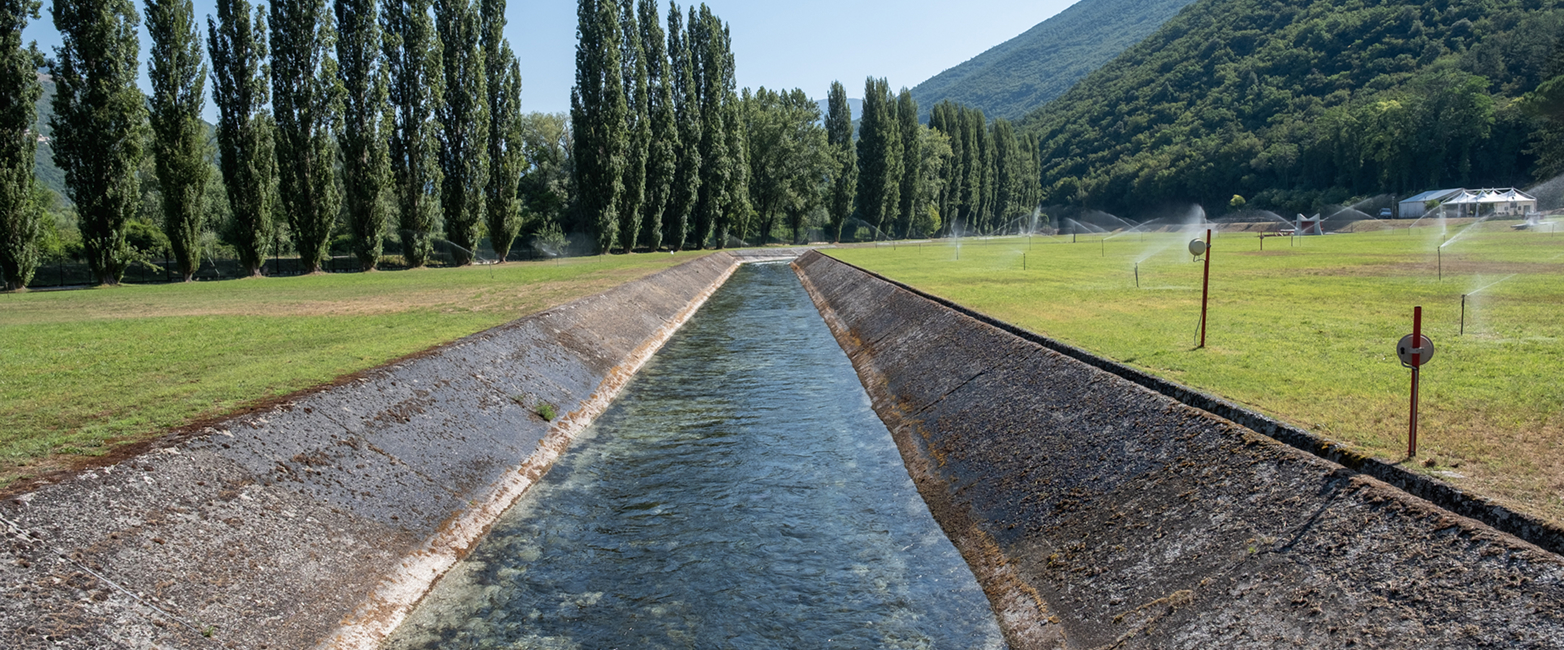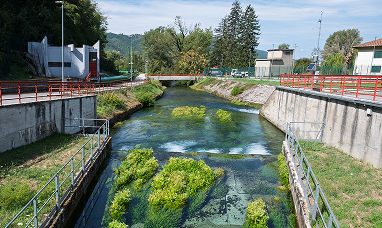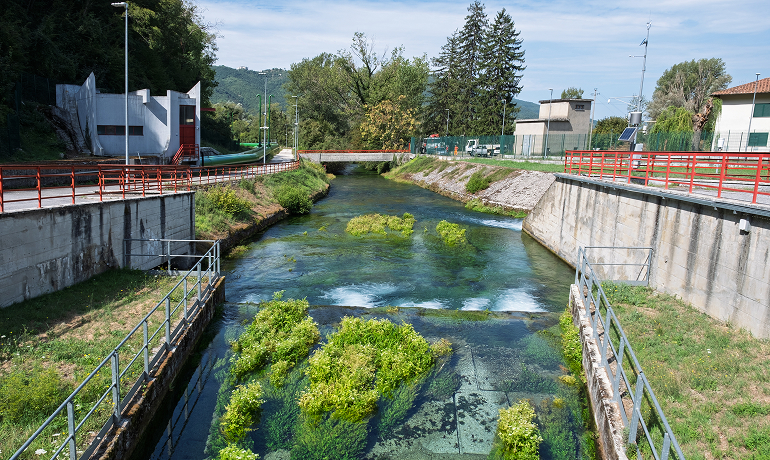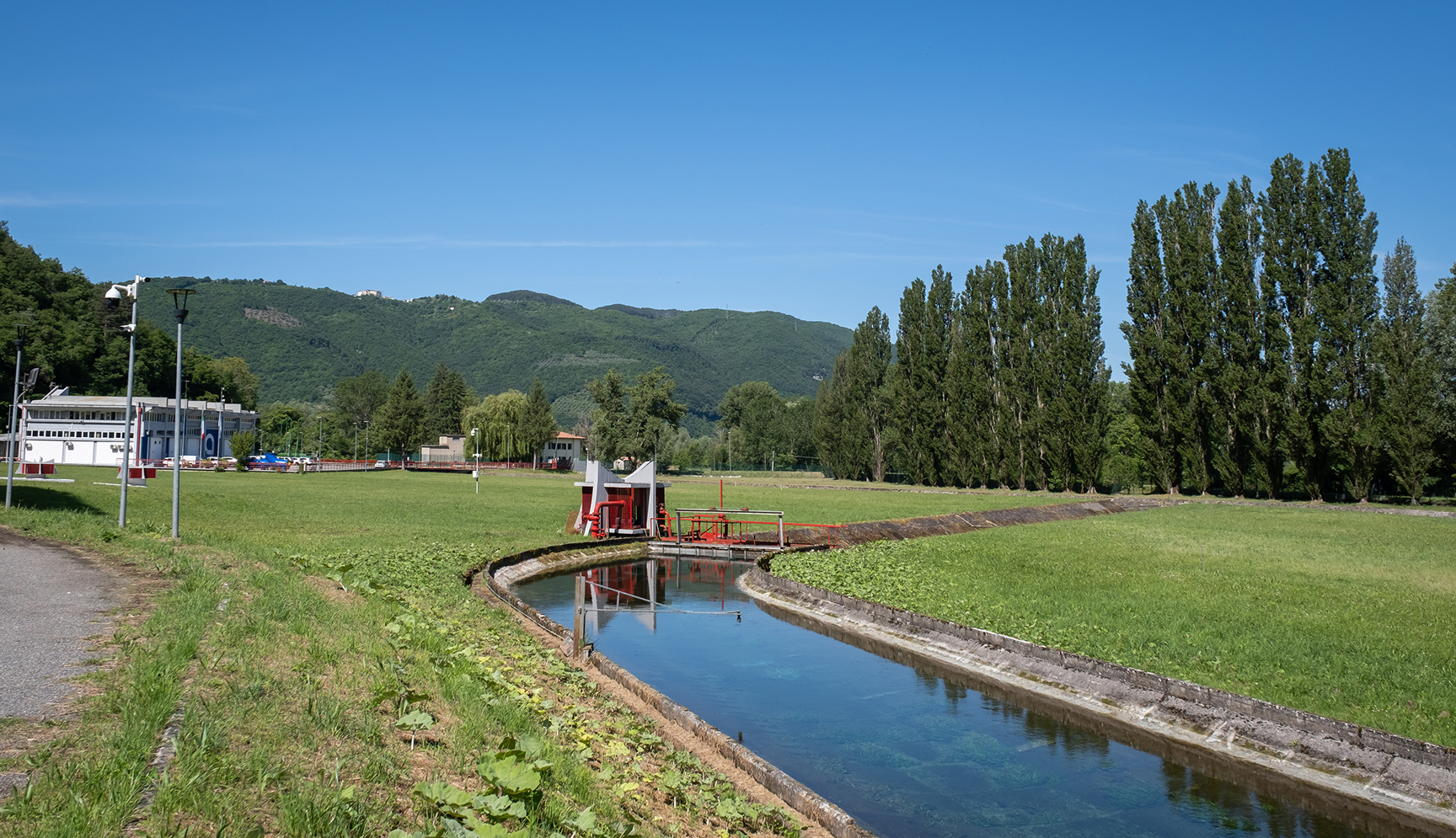
The Peschiera-Capore aqueduct system
We abstract water from the source and convey it to the aqueducts, returning unused water to the environment.


Water abstraction is the process that enables the abstraction of water from a natural source to convey it to the water network and distribute it to communities. Abstraction is of great importance to communities: it is the stage of the water supply chain during which, thanks to a constant remote monitoring system, we reduce losses and waste, intervening in real time whenever necessary.

The Peschiera-Capore aqueduct system
Abstraction is a process through which water is collected and conveyed to collection basins, before it starts its journey towards water centres and then distribution.
Abstraction systems vary according to the aqueduct where they are located and are adapted to its structure. In the case of the Peschiera aqueduct, one of the largest spring-fed aqueducts in Europe and worldwide, part of the abstraction takes place naturally inside the mountain, through draining galleries. Another part is lifted using large electric pumps.
Remote control is a key element in the modern management of aqueducts.
Thanks to sophisticated equipment, the physicochemical and biological parameters of water are analysed in real time. All relevant data is immediately transmitted to the operations room, where our technicians carry out continuous monitoring, 365 days a year. From the operations room, each necessary action is remotely controlled, partially eliminating the need for manual intervention.
Electric pumps, the machines that draw water from the source, are assisted by the so-called inverter panels, which optimise their operation and generate real-time reports that can be consulted on computers and smartphones.
This constant monitoring allows us to significantly reduce response times in the event of anomalies and to prevent them thanks to the large amount of data collected in daily reports.

It enables more precise management of flow rates and pressures based on the actual needs of the different areas we serve.
Once collected, water is held in collection basins, where storage levels are constantly monitored to regulate the outflow rate to the distribution network.
Taking into account the water demand of the different areas served, pressure is modulated to ensure a constant supply, adequate to everyone's needs.
This responsible management safeguards the resource, avoiding waste and optimising the use of abstracted water.
Thanks to strategic and targeted interventions, we have achieved a significant reduction in water abstraction at the source.
The rehabilitation of pipelines to ensure efficient flow, the repair of key assets to prevent leaks, and the adoption of advanced monitoring systems for constant monitoring of the resource have enabled us to improve water management in a sustainable and effective way.
Abstracted water that is not used is returned to the environment, thus contributing to maintaining the ecosystem. This process is monitored by real-time flow meters, which ensure precise and continuous monitoring of water, supporting responsible and sustainable management of environmental resources.